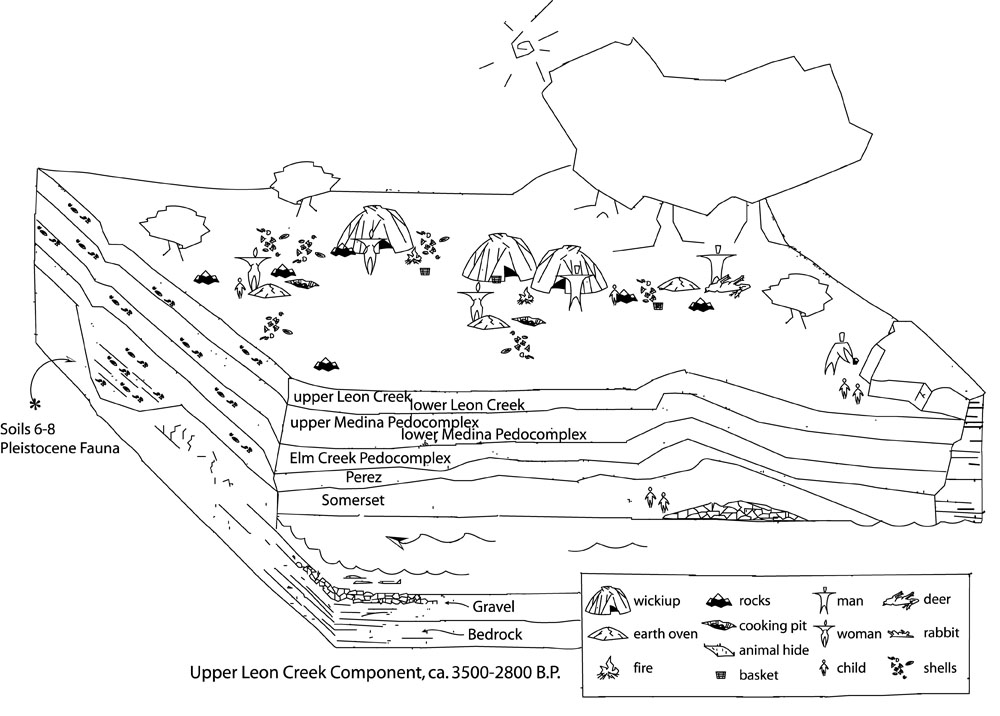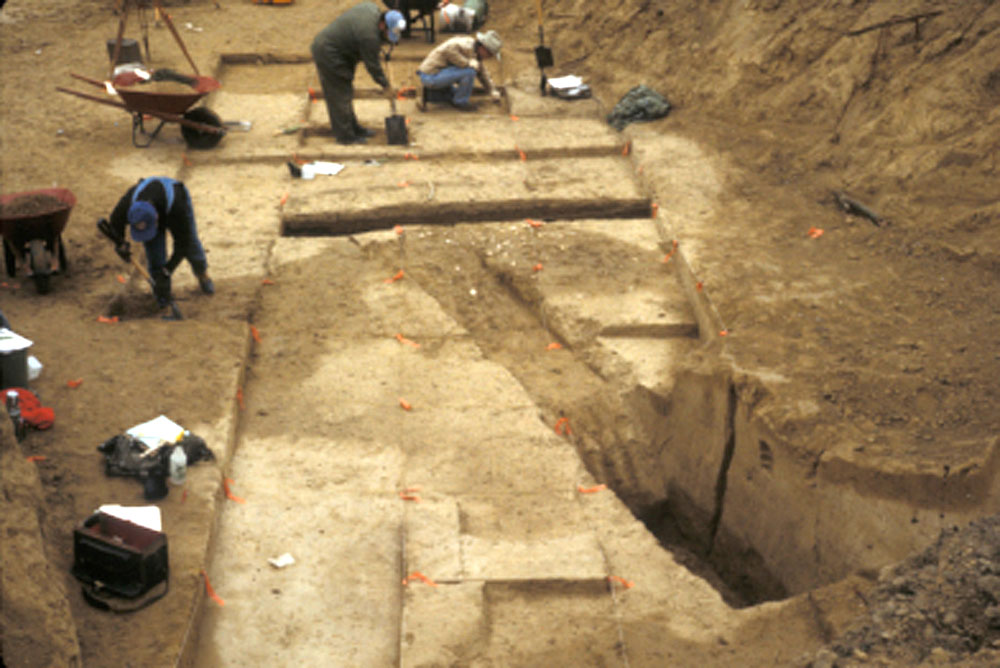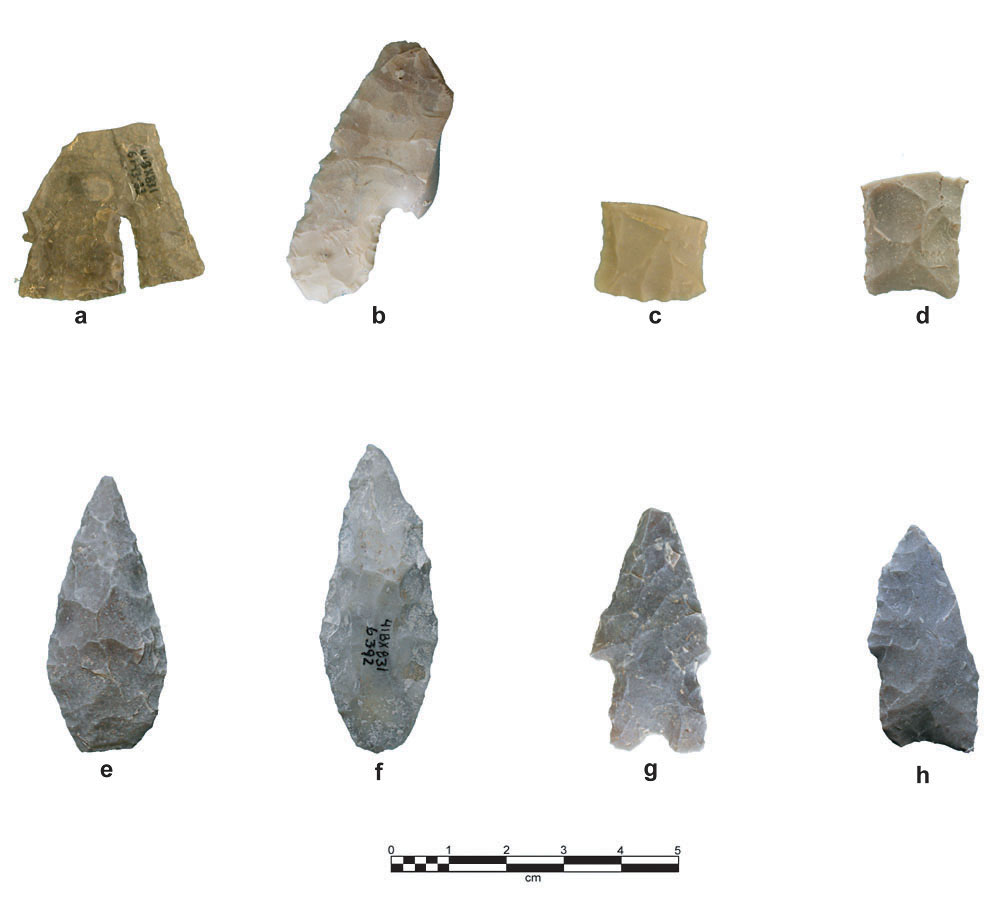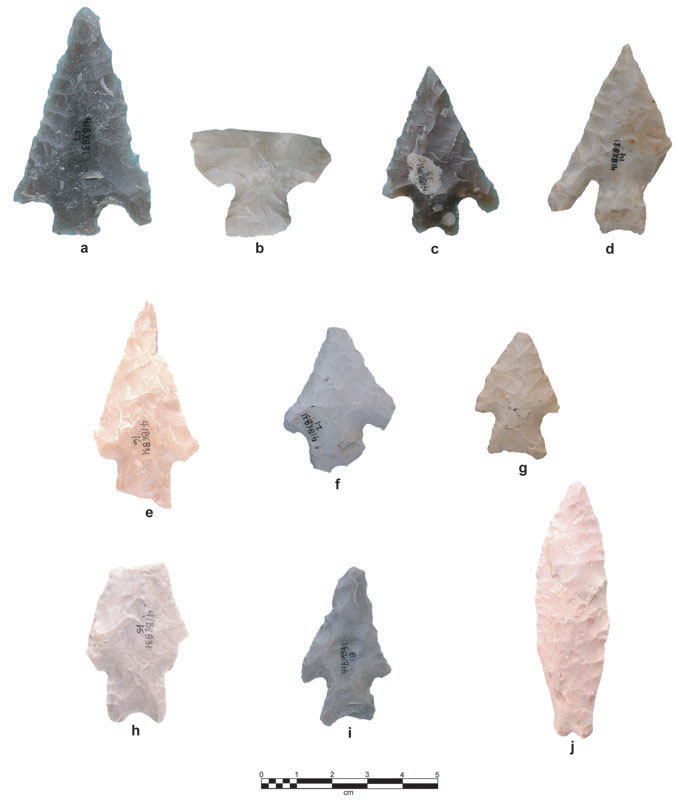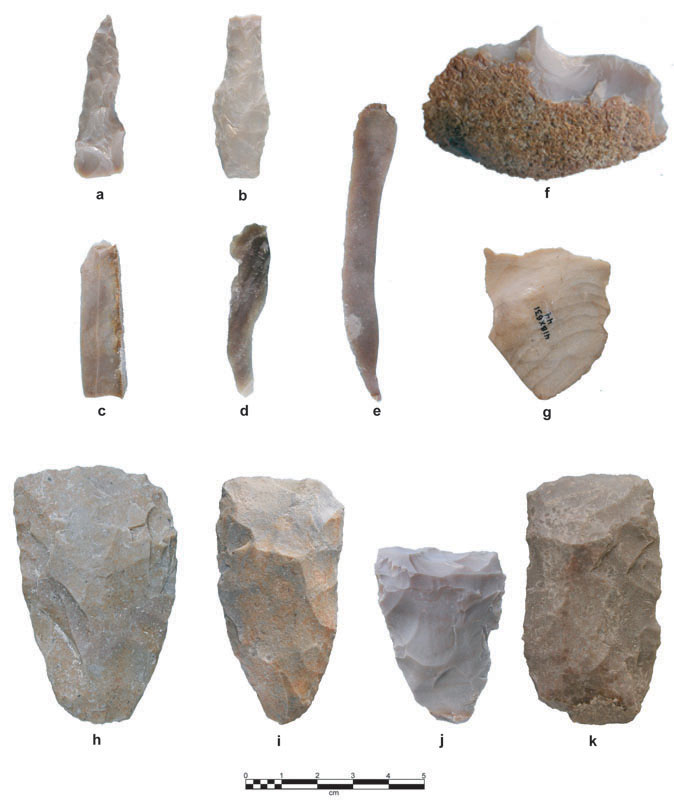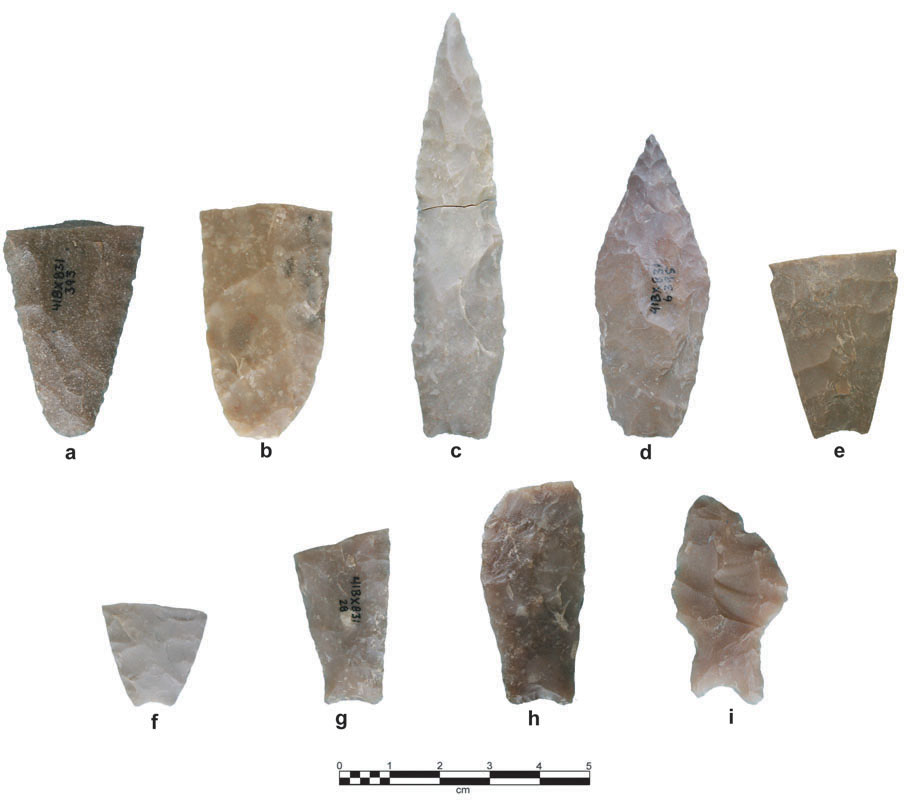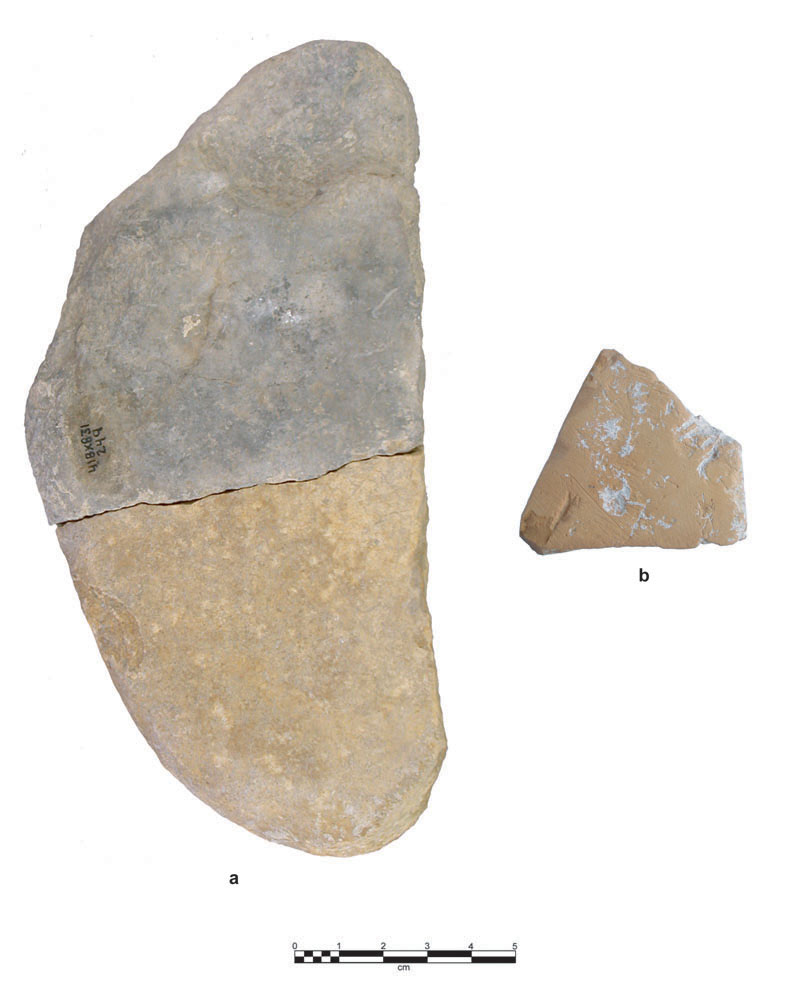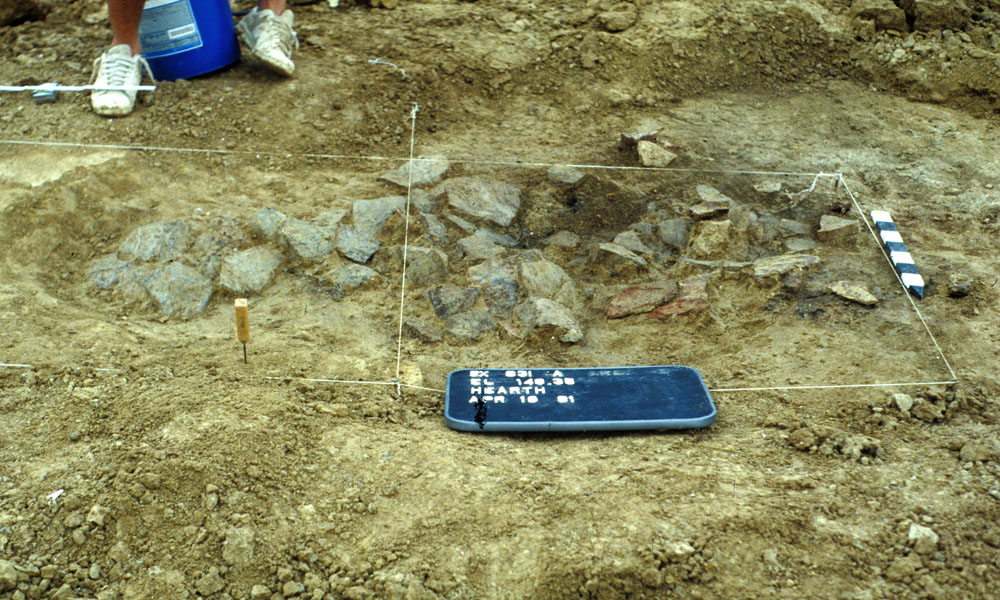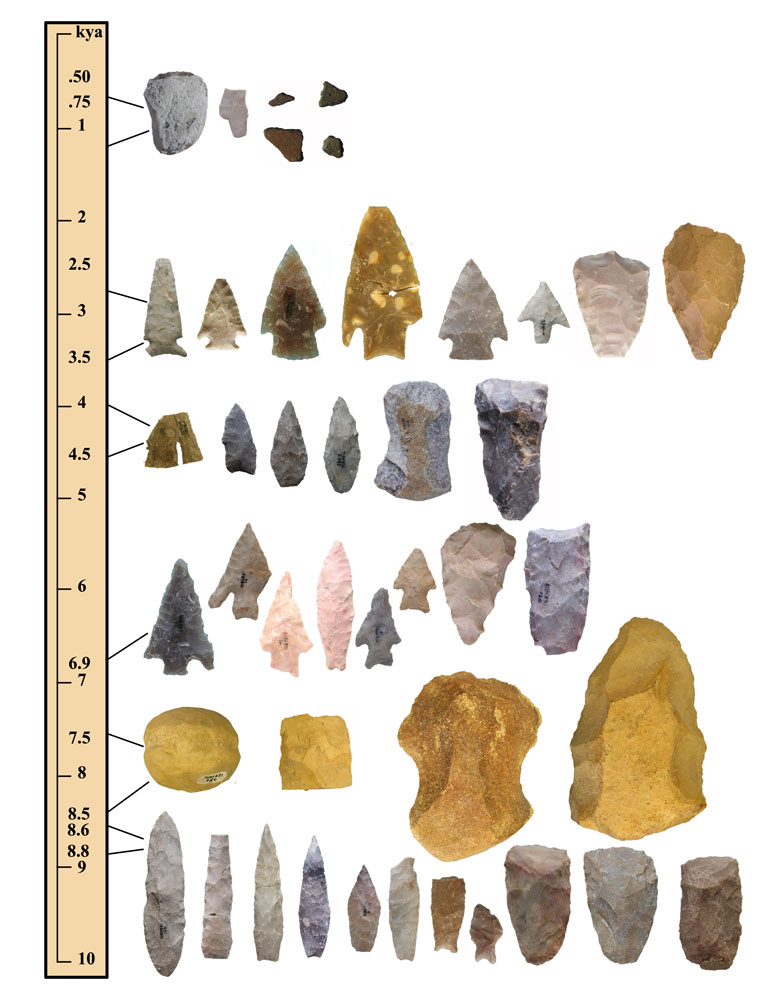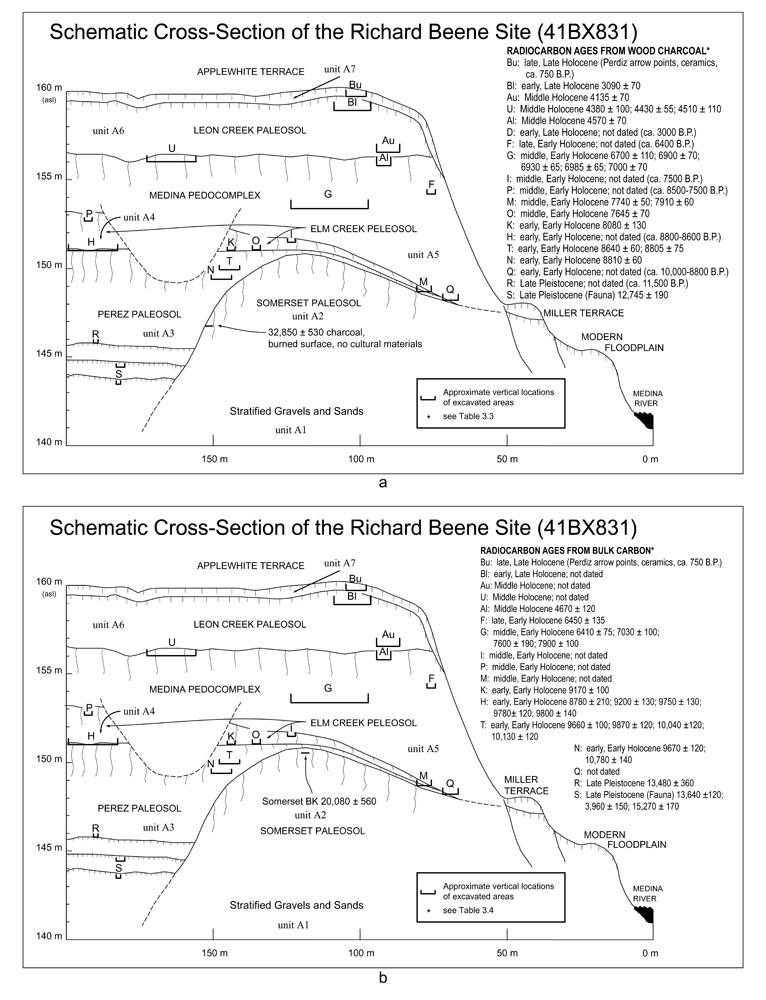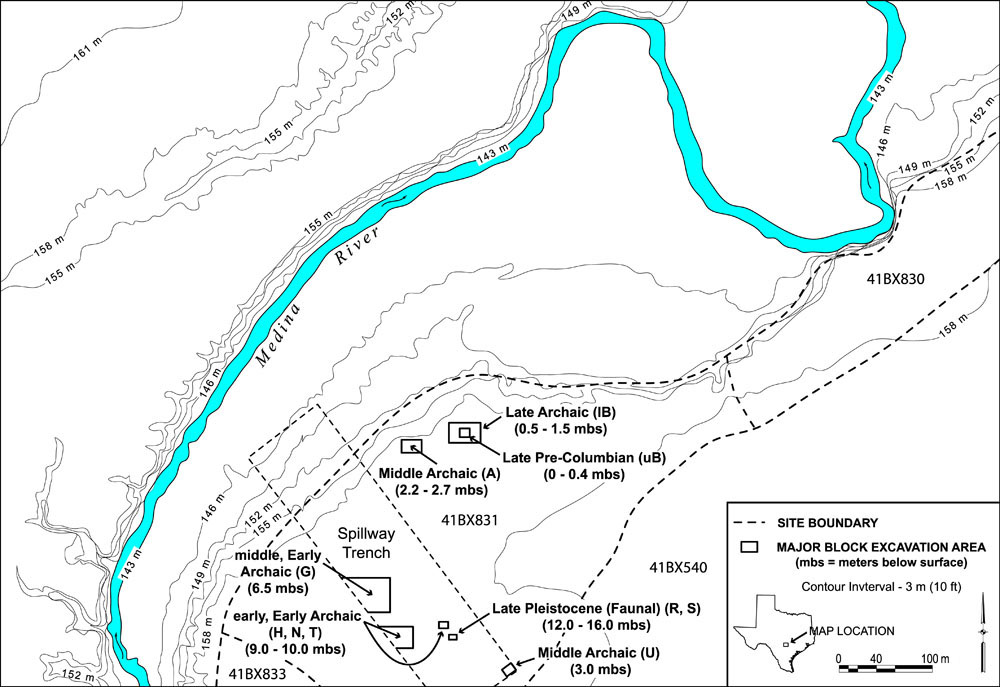|
The Richard Beene site is one of about 90 archeological sites discovered and test excavated between 1981 and 1990 as part of cultural resource investigations undertaken for the proposed construction of Applewhite Reservoir by the San Antonio Water System. Initial archeological survey and test excavations at several sites in the reservoir area were undertaken by the Center for Archaeological Research at the University of Texas at San Antonio. The final rounds of survey work and test excavations in the proposed impoundment area, as well as full-scale excavations at Beene, were conducted through Center for Ecological Archaeology (CEA) at Texas A&M University in the early 1990s.
Texas A&M archeologists discovered and recorded the Richard Beene site, then known only as 41BX831, in early 1990. Testing performed at this time determined that the site likely contained materials dating to the Middle Archaic and Late Archaic periods. Based on this assessment and the fact that the site was located in an area where construction was about to begin, archeologists from the CEA and the Texas Historical Commission (regulatory agency) decided that the site would be the first to be excavated when archeological work continued in November of 1990. Archeologist Alston Thoms led the excavation team and was assisted by geoarcheologist Rolfe Mandel from the University of Kansas . Given the enormity of the Applewhite Reservoir project, it was not feasible for work on the reservoir to stop while archeologists excavated the site and construction on the spillway and dam continued without interruption. During the entire investigation, archeologists worked in the midst of bulldozers, trucks, and other heavy machinery engaged in the construction of the dam. Not to give the wrong impression, the heavy machinery was carefully routed around the archeological work. Many of the strategic decisions about where and when to dig were pragmatic accommodations of the construction realities.
The Late Archaic deposits, also known as the upper Leon Creek component, date to between 1,000 and
1,830 B.C. Evidence indicates that the climate during this period was drier and
warmer than the present-day climate. Though evidence of hunting in the form of projectile points such as
Ensor, Marcos, and Nolan was recovered from this component, there was also ample evidence of plant
processing in the form of grinding slabs and sandstone earth ovens. The presence of adzes and choppers suggest that wood-working was also taking place.
Middle Archaic deposits, known as lower Leon Creek and upper Medina components, date to between 2,680 B.C. and 3,200 B.C. This period at the Richard Beene site seems to represent a relatively short-term cool and wet climatic interval. Projectile points and stone knives, along with evidence from animal bones in this component indicate that deer were an important part of the diet. |
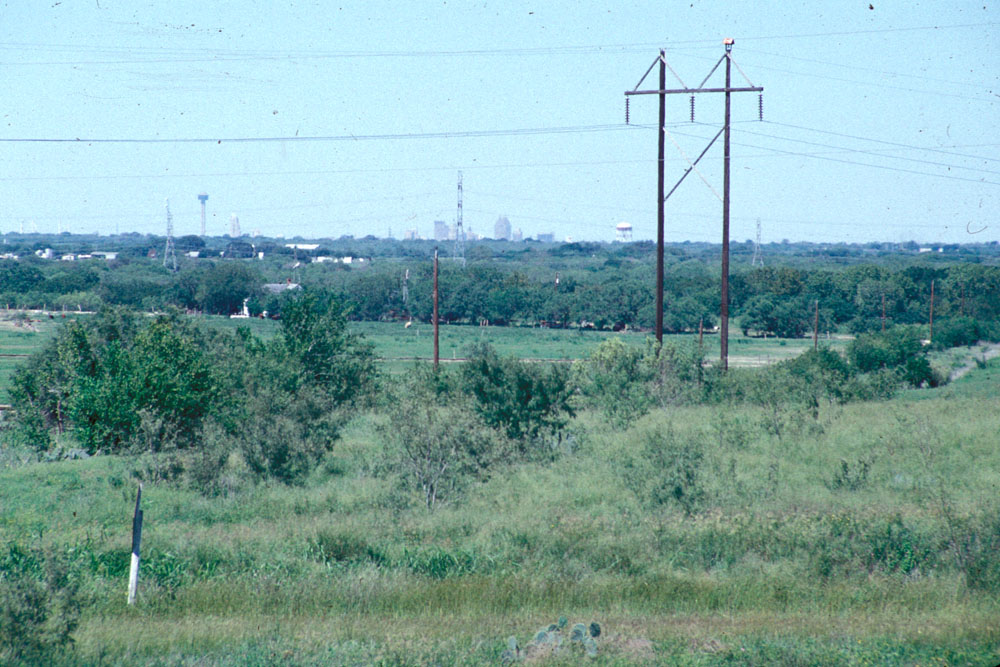
View of the Richard Beene site environs with the city of San Antonio in the distant background.  |
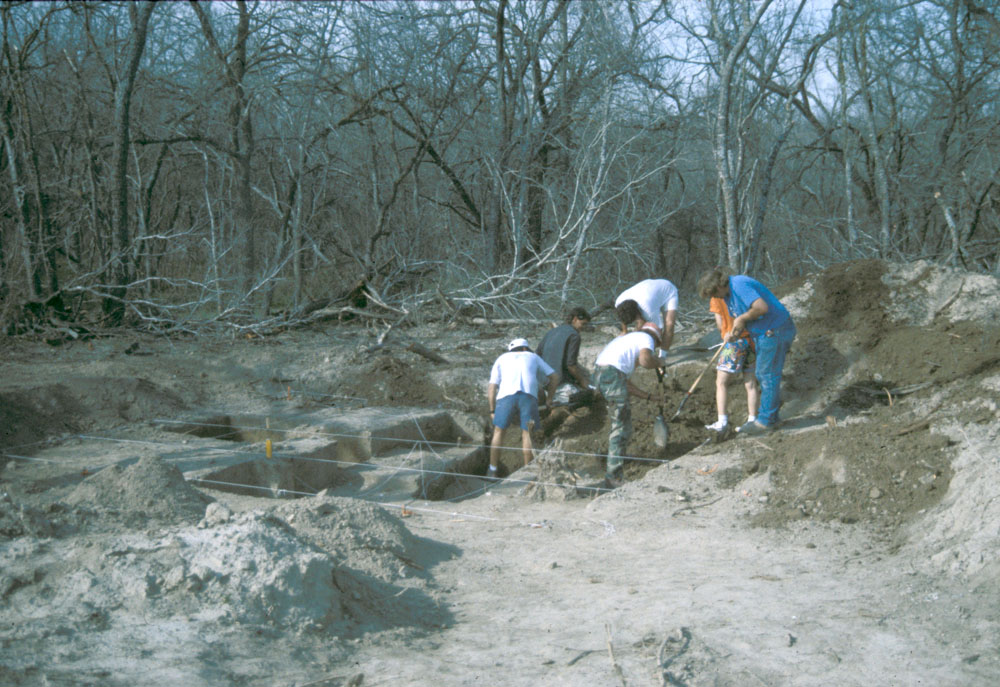
Archeologists working during the early phase of investigation at the Richard Beene site in late 1990.  |
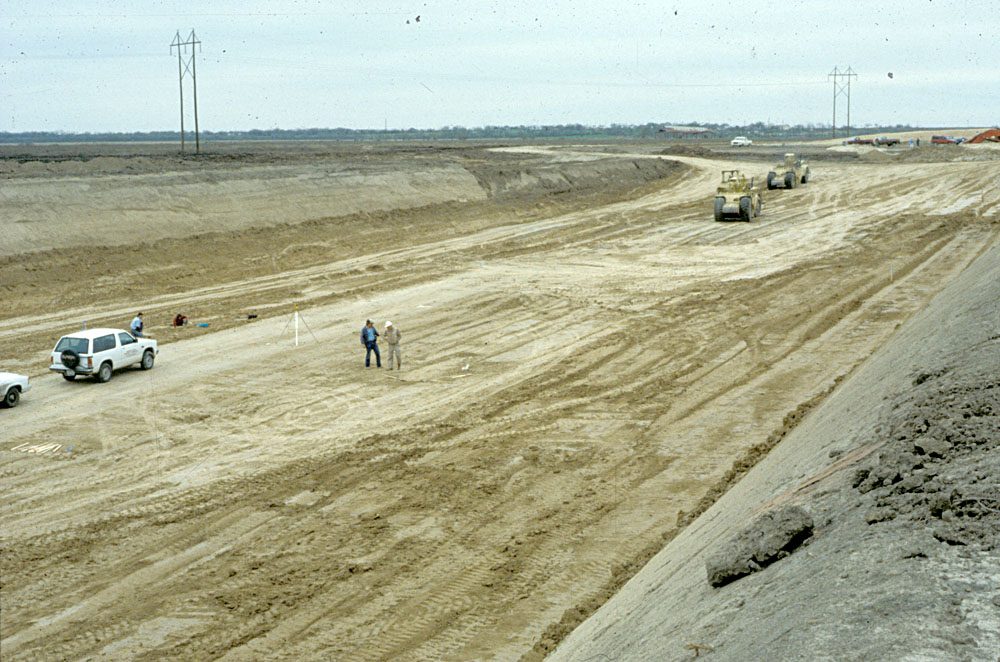
Field inspector Richard Beene (center, wearing hard hat) discovered and saved an Early Archaic camp depostit from destruction by construction equipment. Site 41BX831 was renamed in recognition of his efforts.  |
|
